What to Do During an Earthquake
An earthquake is a natural event that happens because of a sudden displacement along a fault line within the earth. Although these cannot be predicted, there are certain steps we can follow to stay safe wherever we are.
5-Minute Crafts has prepared a guide to help you know what to do in case there’s an earthquake in your area. However, we remind you that this article has been created for informative purposes only, and does not replace professional advice.
If you’re indoors:
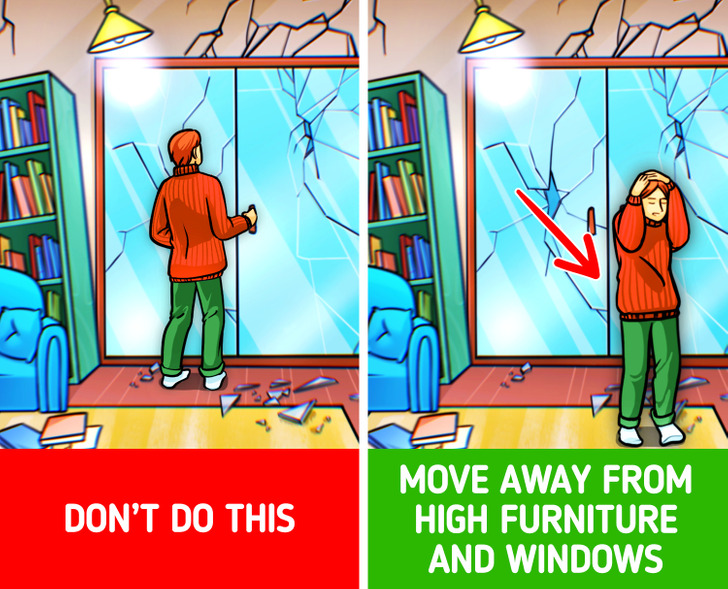
- Move away from windows, fireplaces, hanging objects, glass, bookcases, and any other piece of furniture that could fall. Watch out for cabinets with doors that could open up.
- If you’re cooking in the kitchen, quickly turn off the stove, cover yourself as soon as the shaking begins, and get out of there. Things can start falling on you.
🚫 Don’t go outside. If you’re indoors, stay indoors. Do not attempt to use the elevators as the electricity could go out.
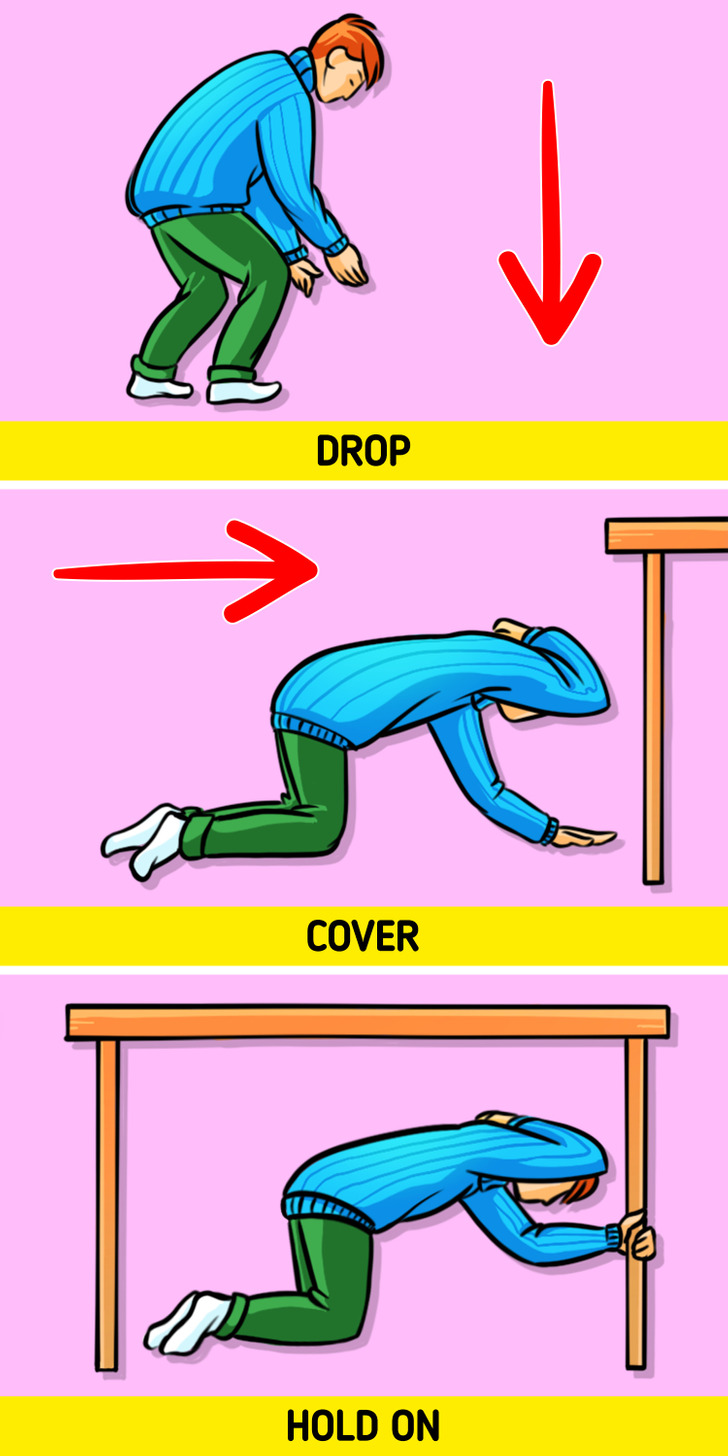
If there’s a piece of strong furniture near you, like a table or a desk, remember the “drop, cover, and hold on” rule:
- Drop down to your knees and hands.
- Cover your neck and head by using your arms and go under a solid piece of furniture. Stay bent over as this will help you protect vital organs.
- Hold on to the table or desk and be prepared to move with it. Stay under your shelter until the earthquake stops.
✅ If you can’t find shelter under a table, get down close to an interior wall or next to low furniture. Protect your neck and head with your arms and hands.
✅ If you’re in bed, stay there. Turn your face down and protect your neck and head with a pillow.
🚫 Don’t stand in a doorway. These cannot protect you from falling objects, which are a very common cause of injury during an earthquake.
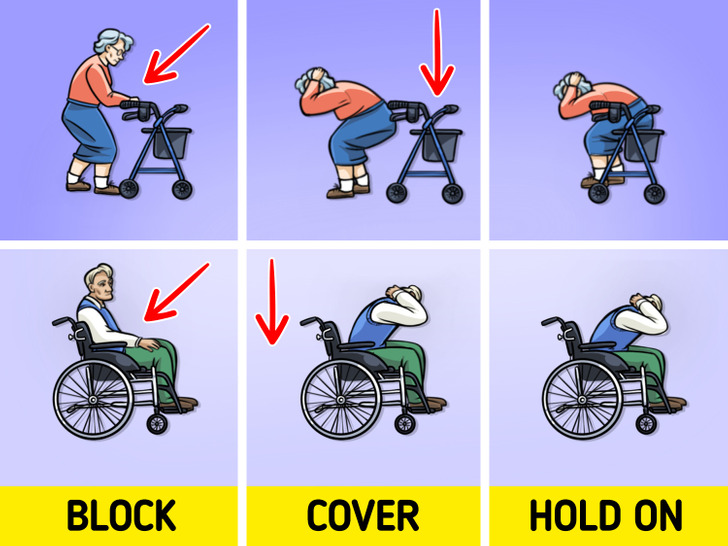
If you’re outdoors:
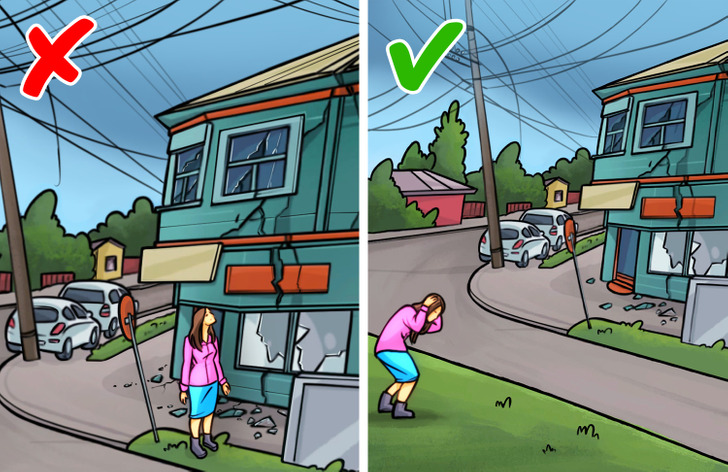
- Stay outside and walk away from buildings, sinkholes, utility wires, and fuel lines.
- Go to an open area far from trees, buildings, and utility poles. If you’re in a crowded area, make sure to protect yourself in a place where you can’t be trampled.
🚫 Don’t stand close to doorways or outer walls of buildings as debris, windows, and other structural details can start falling down. Once you’re in an open area, don’t move until the earthquake stops.
If you’re in a moving vehicle:
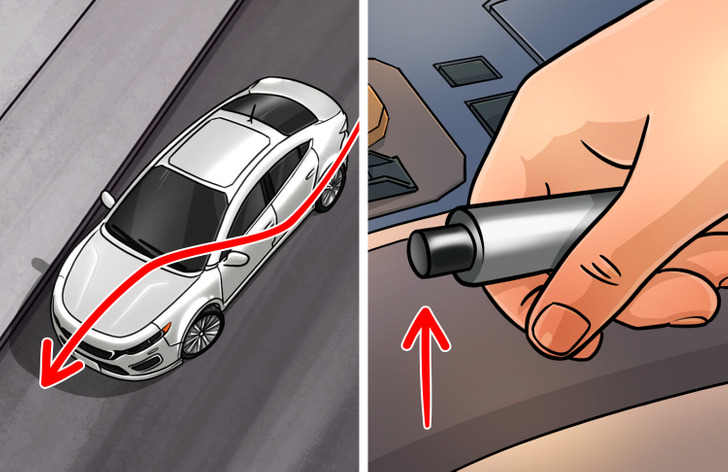
- Move your car to the curb or shoulder and stay away from utility poles, wires, bridges, underpasses, overpasses, and buildings. Stop as fast as possible and pull the parking brake up.
- If you’re on a bus, remain in your seat until the bus driver pulls over and protect yourself in a safe place. You can also sit in a bent position and cover your head.
✅ When driving a vehicle, make sure to pull over in a place where you’re not blocking the road for emergency vehicles.
🚫 Do not try to get out of the vehicle if utility wires have fallen across it. Wait there until you’re rescued. Show a help sign through the window if necessary.
If you’re close to the ocean:
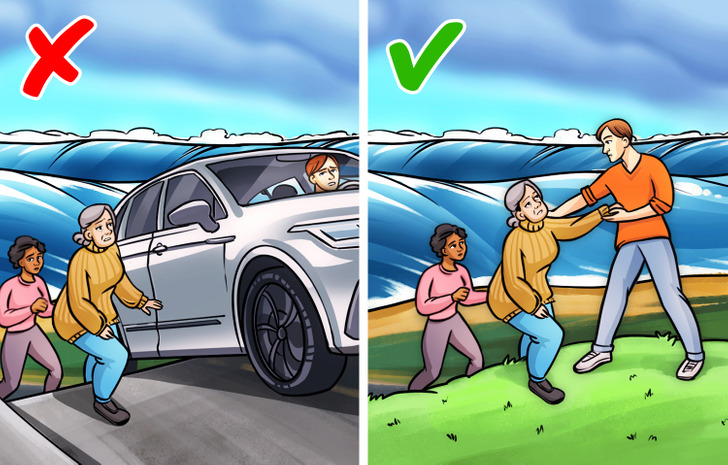
- Quickly evacuate if intense shaking lasts for 20 seconds or more. Remember that earthquakes might cause tsunamis. Walk 2 miles inland, or go up to ground that is at least 100 feet above sea level.
🚫 Don’t wait for warnings. Give preference to walking rather than driving to avoid getting stuck in traffic and being hit by falling debris.
What to do after an earthquake:
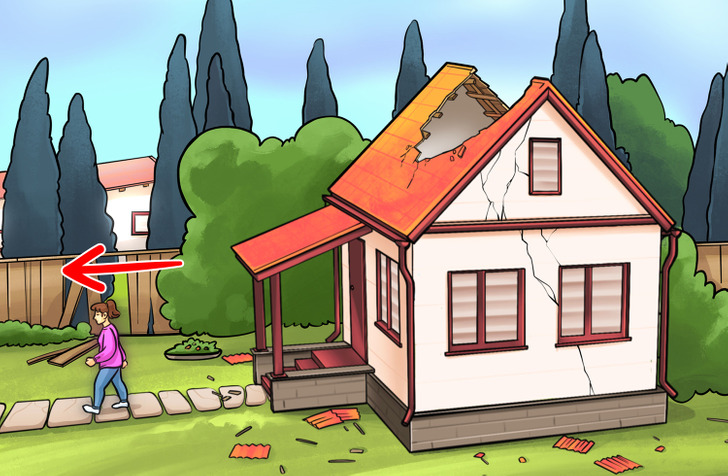
- If you’re in a damaged house or building, go outside and walk away from it. Do not go in damaged buildings.
- If you’re trapped, don’t panic. Try sending a text message or banging on metal objects or a wall to ask for help.
- Keep in mind that there may be aftershocks following the main earthquake. Be prepared to follow the “drop, cover, and hold on” rule if you need to do so.